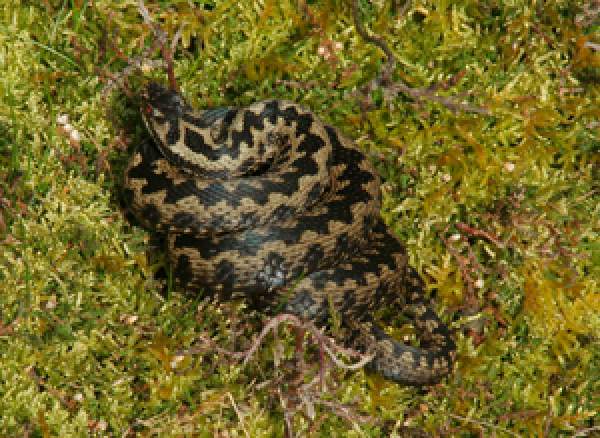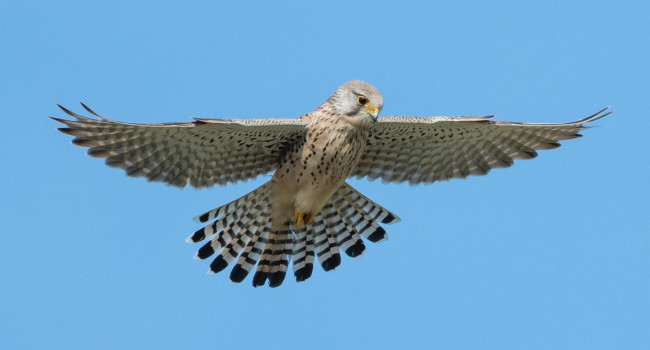Adder
Vipera berus

The Adder is a rather short and stocky snake, the females reaching up to 75cm in length and the males up to 60cm. Most individuals show a clear wide zig-zag pattern along their back and a 'V' or 'X' marking on their head. The two sexes are very different in colour. Females are usually sandy or pinky-brown in colour, with a dark tan zig-zag. Males are usually light grey or cream with a jet black zig-zag (see photograph). Both sexes show the characteristic red eye and a vertical black pupil.
Adders are mostly predated on by birds including birds of prey and some members of the crow family. Other predators include Smooth Snakes, Badgers and Foxes. It has been shown that many would-be predators recognize the classic Adder zig-zag markings and avoid the snakes.
The Adder is thought to be in decline within Britain and concerns over its status have prompted conservation action. Adders are protected under the Wildlife and Countryside Act 1981 and may not be killed, injured or traded in any way.
The Adder is the most northerly member of the viper family and is found throughout much of Britain, but not Ireland. Open sunny sites within woodland, moorland, heathland grassland are used, where the snakes can catch and feed on rodents and lizards. After emerging from hibernation in early spring, Adders will spend a number of days (or weeks) basking on and off. It is at this time that they are at their most approachable. A number of individuals will often overwinter together, the chosen sites often within a rootball or an embankment. They then disperse for the summer, using their camouflage markings and shy nature to blend in with their habitat.
The Adder's breeding season starts in April/May and then the young emerge in August/September. Unlike most snakes, female Adders do not lay eggs but give birth to live young.






Share this page